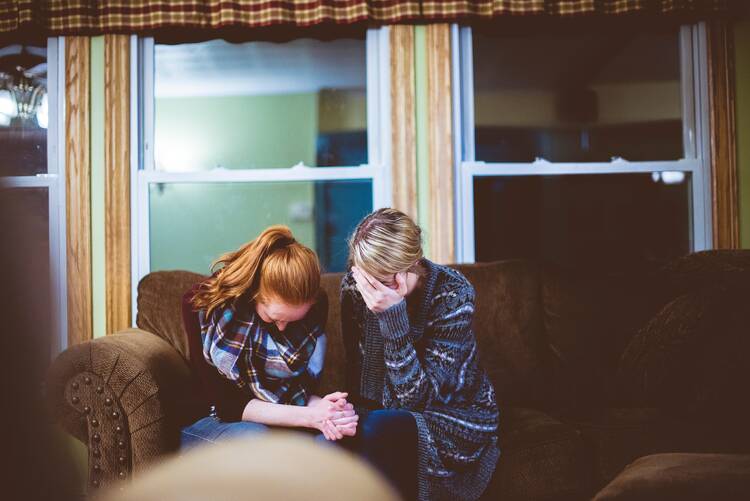An epidemic of gun violence is tearing apart families in the United States every day. The horrific mass shooting in Las Vegas on Oct. 1 reminded us of this scourge upon our nation, and the editors of America have long held that the only permanent solution is the repeal of the Second Amendment (Am., 2/23/13). But the most significant consequence of unfettered gun ownership is not our shameful history of mass shootings: It is suicide.
Stephen Paddock killed 58 people in his Las Vegas attack. While the following comparison is in no way meant to diminish the enormity of that tragedy, on a typical day in the United States, the same number of people die from self-inflicted gunshot wounds, according to the Centers for Disease Control. To phrase that another way, the epidemic of gun suicide is killing Americans at the rate of one Las Vegas attack every single day.
More than 60 percent of the people who die from gun violence in the United States, in fact, die from suicide. The problem is not only access to firearms—one in three American households owns at least one gun—but that guns are a far more lethal weapon for inflicting self-harm than any other method. Researchers at the T. H. Chan School of Public Health at Harvard University have found that most suicide attempts have a fatality rate below 5 percent; for attempts with a firearm, that number soars to an astonishing 85 percent.
A suicide prevented is often more than only one life saved; it often is a whole family preserved.
Sadly, such statistics are not always readily available, because the Centers for Disease Control have been intimidated for two decades by gun-lobby proponents who have threatened to strip funding if C.D.C. research “advocates for” gun control. This lack of data leads to facile conclusions and the repetition of platitudes about gun violence rather than serious reflection, the most callous example being the post-Las Vegas statement by Senator John Kennedy (Republican of Louisiana): “I do not think that the United States Congress can legislate away evil.”
A suicide prevented is often more than only one life saved; it often is a whole family preserved. Americans of every political persuasion agree that the family is the primary building block of society, and in Catholic social teaching the family is understood to be the primary mechanism by which a just and well-ordered society functions. But what destroys a family more efficiently than the self-inflicted death of a father, a mother or a child?
If repeal of the Second Amendment is politically unattainable, can anything be done to reduce the unreasonably large number of guns in our homes? There are no quick fixes, but even incremental changes in law and practice can make a difference over time. Laws against drunk driving, for example, were minimally effective at reducing fatalities when first codified in the 1930s, in part because the initial standards for blood alcohol concentration (.15 percent) were fully twice what they are today (.08 percent). But incremental changes in the law, along with education programs, both of which helped establish strong social norms against drunk driving, eventually had long-lasting effects. Over the last 40 years, drunk driving fatalities have decreased by more than 50 percent.
This same incremental approach could work in fighting the gun suicide epidemic in our families. But a first step has to be taken. Las Vegas (and Sandy Hook before it) made it clear that the horror of mass shootings is not enough to convince legislators to take action. Can the ongoing deadly plague in our homes, putting our children and loved ones at daily risk, provide the impetus finally to change hearts and minds?









